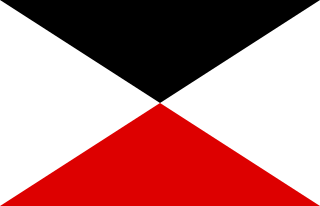Related Research Articles
The 27th Division was an infantry division of the British Army raised during the Great War, formed in late 1914 by combining various Regular Army units that had been acting as garrisons about the British Empire. The division spent most of 1915 on the Western Front in France before moving to Salonika where it remained with the British Salonika Army for the duration of the war. In 1916 its commander Hurdis Ravenshaw was captured by an Austrian submarine whilst sailing to England. In 1918 in Salonika the division took part in the Battle of Doiran. It carried out occupation duties in the Caucasus in the post-war before being withdrawn from the region in 1919.

The 60th Division was an infantry division of the British Army raised during the First World War. It was the second line-formation of the 47th Division, and was the second of two such Territorial Force divisions formed from the surplus of London recruits in 1914.

The 7th Infantry Division was an infantry division of the British Army, first established by The Duke of Wellington as part of the Anglo-Portuguese Army for service in the Peninsular War, and was active also during the First World War from 1914 to 1919, and briefly in the Second World War in 1939.

The 46th Division was an infantry division of the British Army, part of the Territorial Force, that saw service in the First World War. At the outbreak of the war, the 46th Division was commanded by Major-General Hon. E.J. Montagu-Stuart-Wortley. Originally called the North Midland Division, it was redesignated as the 46th Division in May 1915.

The 32nd Division was an infantry division of the British Army that was raised in 1914, during the First World War. The division was raised from volunteers for Lord Kitchener's New Armies, made up of infantry 'Pals battalions' and artillery brigades raised by public subscription or private patronage. The division was taken over by the War Office in September 1915. It served in France and Belgium in the trenches of the Western Front for the duration of the war. It saw action at the Battle of the Somme, the Pursuit to the Hindenburg Line, the Defence of Nieuport, the German spring offensive, and the Allied Hundred Days Offensive beginning at the Battle of Amiens. After the Armistice it marched into Germany as part of the Army of Occupation.

The 47th Division was an infantry division of the British Army, raised in 1908 as part of the Territorial Force.

The Irish Regiment of Canada is a Primary Reserve infantry regiment of the Canadian Army based in Sudbury, Ontario. It is part of the 4th Canadian Division's 33 Canadian Brigade Group. Currently one battalion of the regiment exists.
The 167th Brigade was an infantry formation of the British Territorial Army that saw active service in both the First and Second World Wars. It was the first Territorial formation to go overseas in 1914, garrisoned Malta, and then served with the 56th (London) Infantry Division on the Western Front. In the Second World War, it fought in the North African and Italian campaigns in the Second World War.
The 28th Division was an infantry division of the British Army raised for service in World War I.
The 168th Brigade was an infantry brigade formation of the British Army that saw service during both the First and the Second World Wars. Throughout its existence, serving under many different titles and designations, the brigade was an integral part of the 56th (London) Infantry Division. It served on the Western Front during First World War and in the Italian Campaign during the Second World War. It was finally disbanded in the 1960s.

The 58th Division was an infantry division created in 1915 as part of the massive expansion of the British Army during the First World War. It was a 2nd Line Territorial Force formation raised as a duplicate of the 56th Division. After training in Britain, the division joined the British Expeditionary Force (BEF) on the Western Front in 1917. It saw action at the battles of Arras and Passchedaele in 1917 and the German spring offensive in 1918. It then took part in the Battle of Amiens and the final Allied Hundred Days Offensive of the war. The division was recreated during the Second World War, as an imaginary deception formation.
The 142nd Brigade was an infantry brigade of the Territorial Army, part of the British Army, that served in the First and the Second World Wars, and remained in the United Kingdom throughout the latter.
The 169th Brigade was an infantry brigade of the British Army that saw active service in both the First and the Second World Wars. Throughout its existence the brigade, serving under numerous many different titles and designations, was an integral part of the 56th (London) Infantry Division. It served on the Western Front in the First World War, and in the North African and Italian campaigns during the Second World War.
The 173rd Brigade was a formation of the British Army's Territorial Force that was raised in 1915. It was assigned to the 58th Division and served on the Western Front during the First World War. Its number was used for a deception formation during the Second World War.
The 174th Brigade was a formation of the Territorial Force of the British Army. It was assigned to the 58th Division and served on the Western Front during the First World War. The brigade was formed as a 2nd Line of the 168th Brigade.

The Landwehr Corps was a corps level command of the German Army in World War I.
71st Division was a short-lived infantry division of the British Army during the First World War. It served in the Home Defence forces and never went overseas.

The Finsbury Rifles was a unit of Britain's Volunteer Force and later Territorial Army from 1860 to 1961. It saw action at Gallipoli, in Palestine and on the Western Front during the First World War. In the Second World War, it served in the Anti-Aircraft (AA) role during the Battle of Britain and the Blitz, then in North Africa, Sicily and Italy.

The Rangers was a volunteer unit of the British Army, originally formed in 1860. It provided a detachment for service in the Second Boer War, saw intensive action on the Western Front in the First World War, and served as motorised infantry during the Second World War during the campaigns in Greece and the Western Desert.
References
- ↑ "58th (2/1st London) Division". The Long Long Trail. Retrieved 4 February 2012.